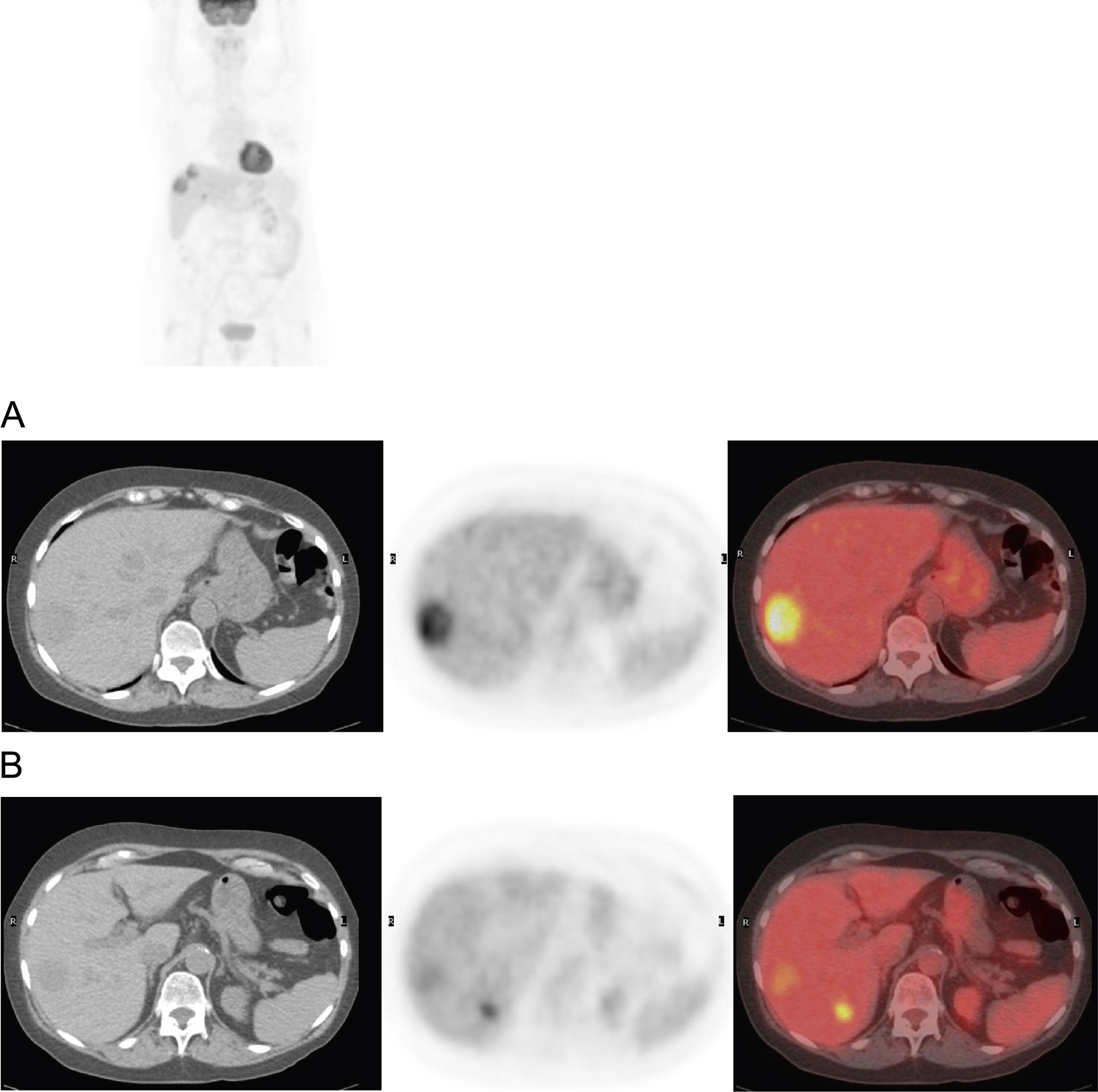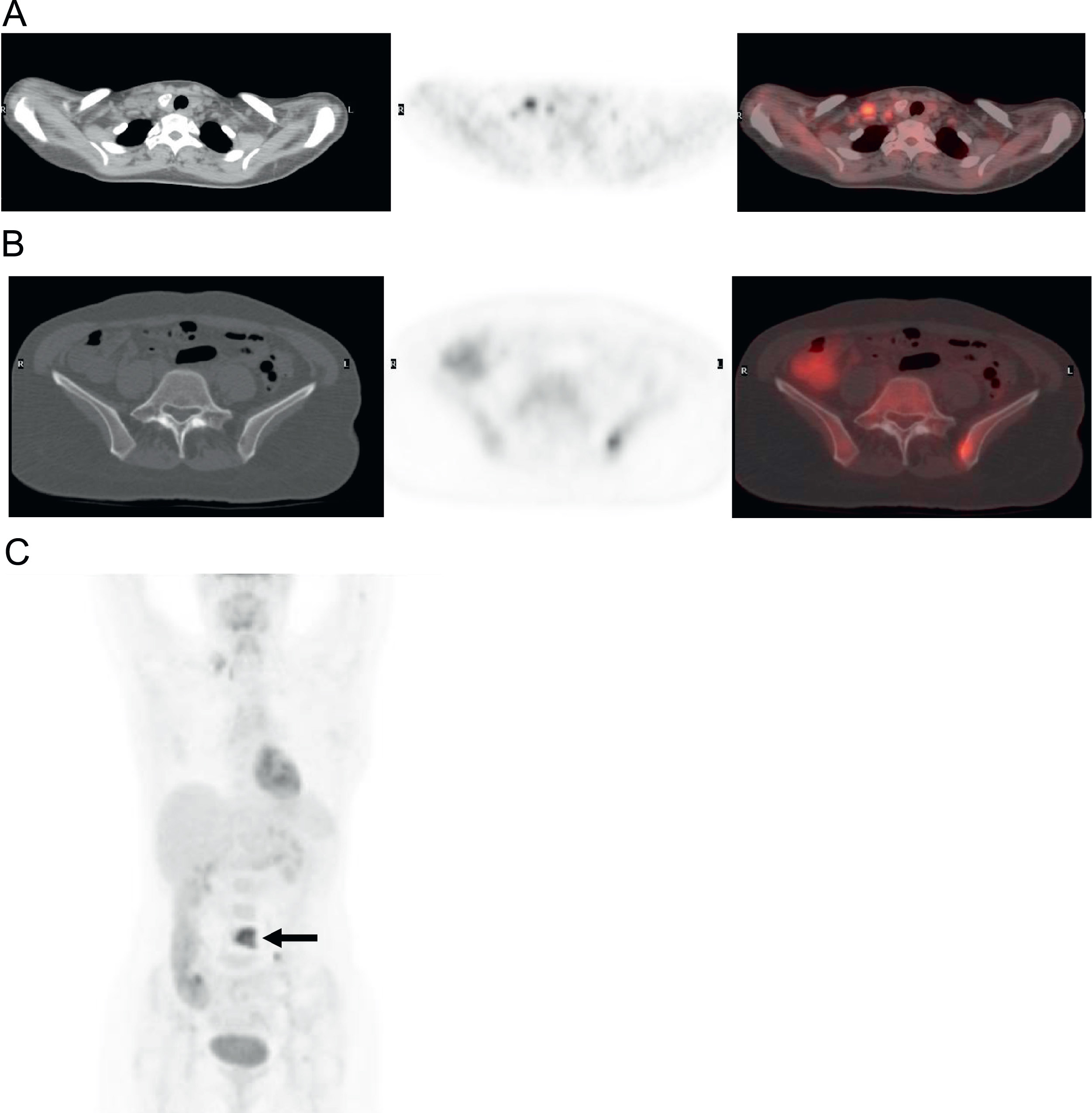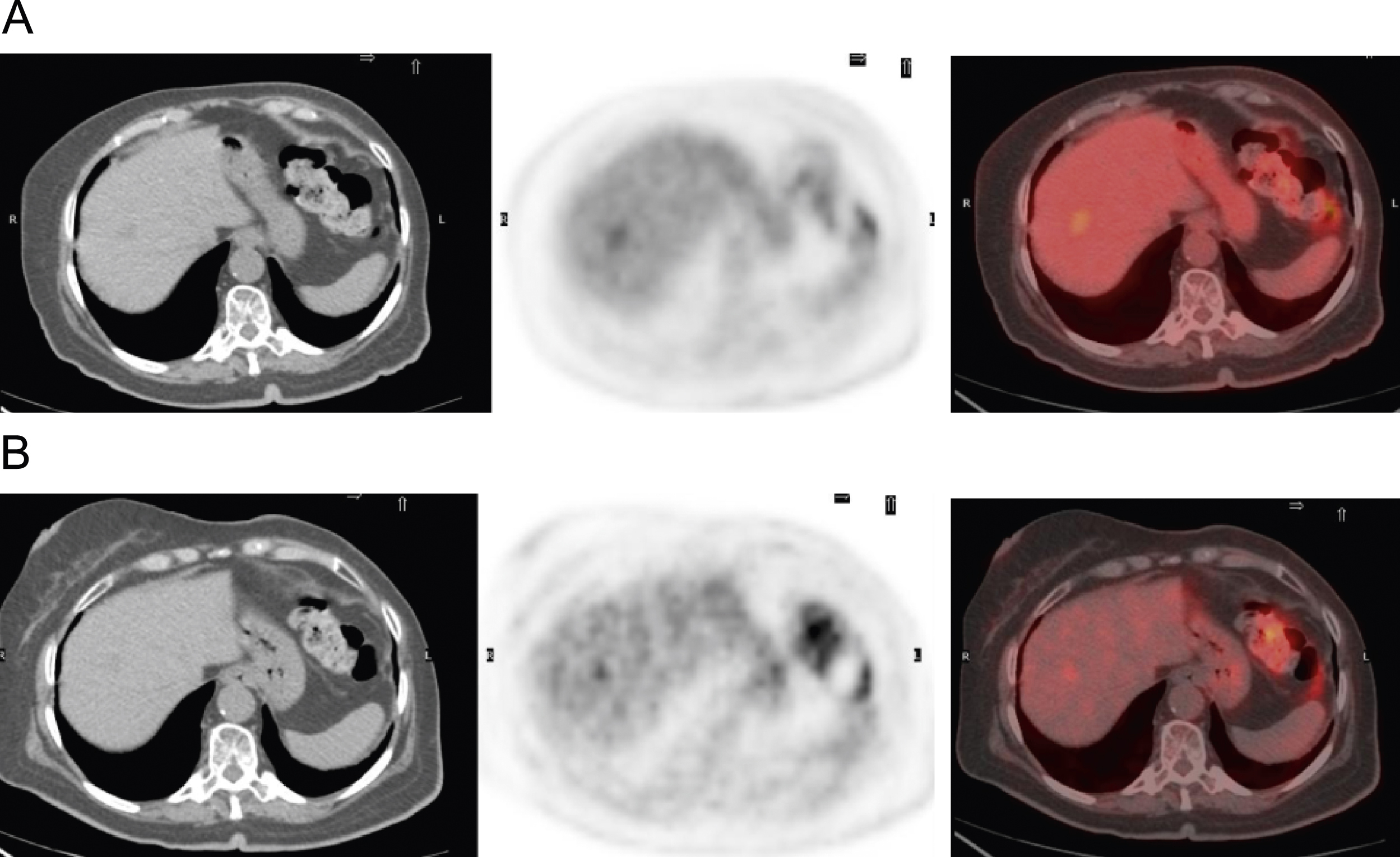El cáncer de mama es un tumor de elevada prevalencia en nuestro entorno, por lo que es fundamental efectuar un diagnóstico precoz, tanto inicialmente en la enfermedad primaria como en la recidiva, dada la elevada mortalidad que presentan aquellos casos con enfermedad avanzada. El objetivo de nuestro trabajo fue evaluar el impacto de la 18F-FDG-tomografía por emisión de positrones /tomografía axial computarizada (PET/TAC) en pacientes con sospecha de recidiva de cáncer de mama y en el manejo terapéutico de éstas.
Para ello analizamos los estudios PET/TAC de 70 pacientes con antecedente de cáncer de mama y sospecha de recidiva, bien por elevación de marcadores tumorales (n=28), hallazgos dudosos en otras técnicas de imagen (n=56) y/o clínica sospechosa (n=1).
Se llevó a cabo en todas las pacientes un estudio FDG-PET estándar adquirido junto con TAC de baja dosis.
Los estudios fueron considerados patológicos en 34 de las 70 pacientes, existiendo 29 verdaderos positivos, 32 verdaderos negativos, 5 falsos positivos y 4 falsos negativos. Se estableció el diagnóstico final mediante confirmación histopatológica (n=17), otras técnicas de imagen (n=26) y/o seguimiento clinicorradiológico (n=27, media de 12,7 meses). Los valores obtenidos de sensibilidad, especificidad, valor predictivo positivo y valor predictivo negativo fueron del 87,8, el 86,4, el 85,2 y el 88,8%, respectivamente. Se modificó el manejo terapéutico en el 41% de las pacientes.
Como conclusión, la PET/TAC es una técnica con alto rendimiento diagnóstico en pacientes con sospecha de recidiva de cáncer de mama.
Breast cancer is a tumor with high prevalence in our environment. Thus, it is essential to make an early diagnosis in both the primary disease and its recurrence, given the high mortality of the cases with the advanced disease. Our study has aimed to evaluate the impact of 18F-FDG-PET/CT in patients with suspected breast cancer recurrence and their therapeutic management.
This study analyzed the PET/CT of 70 patients with a background of breast cancer and suspicion of recurrence, either because of elevation of tumor markers (n=28), doubtful findings on other imaging techniques (n=56) and/or suspicious symptoms (n=1).
All the patients underwent a standard FDG-PET study acquired in combination with low-dose CT.
The studies were considered pathological in 34 of the 70 patients, with 29 true positive, 32 true negative, 5 false positive and 4 false negative results. The final diagnosis was established either by histopathologic confirmation (n=17), other imaging techniques (n=26) and/or clinical radiological follow-up (n=27, mean 12.7 months). The sensitivity, specificity, positive predictive value and negative predictive values obtained were 87.8%, 86.4%, 85.2% and 88.8%, respectively. Therapeutic management was modified in 41% of the patients.
In conclusion, PET/CT is a technique with high diagnostic yield in patients with suspected breast cancer recurrence.
Artículo
Comprando el artículo el PDF del mismo podrá ser descargado
Precio 19,34 €
Comprar ahora










